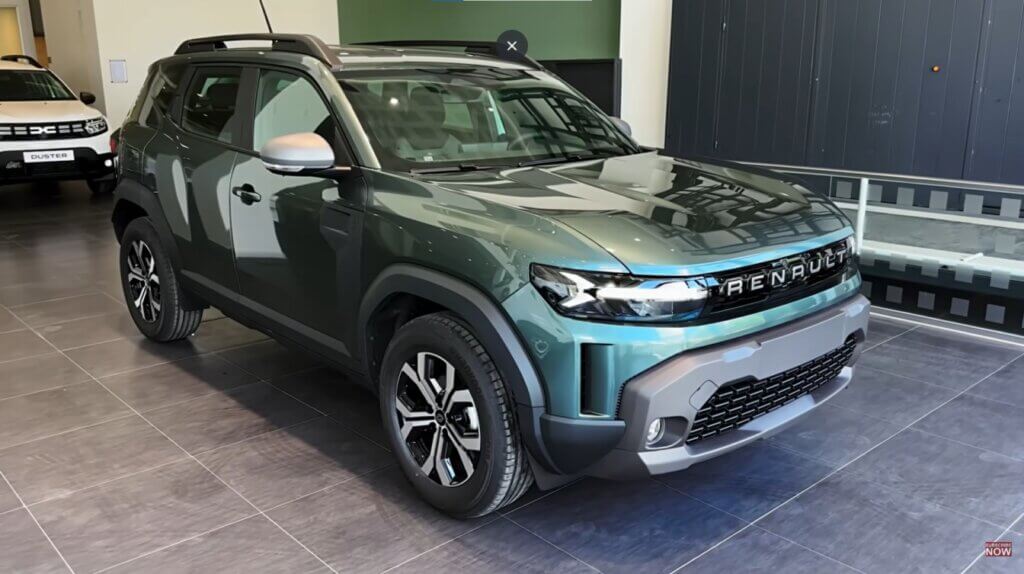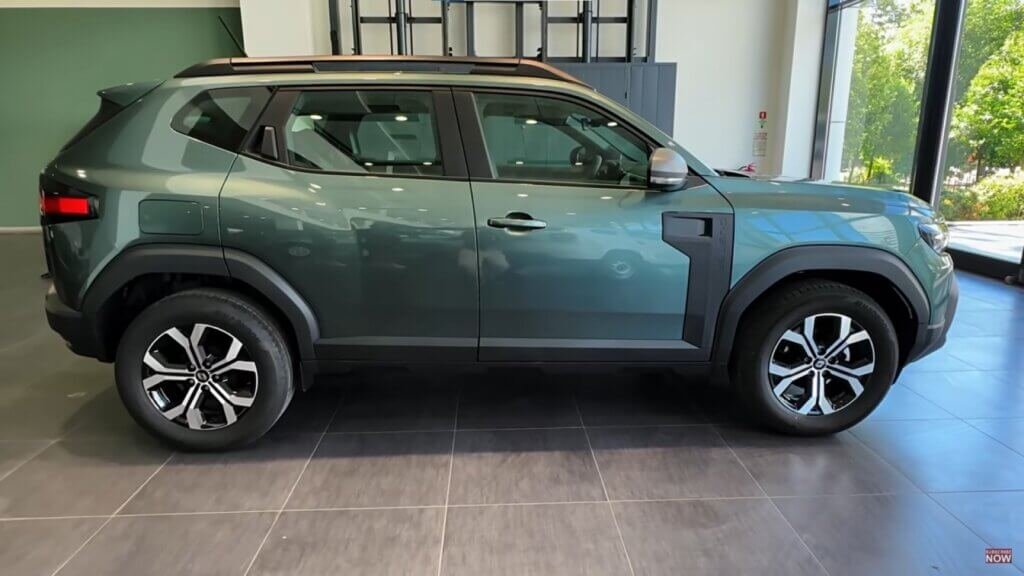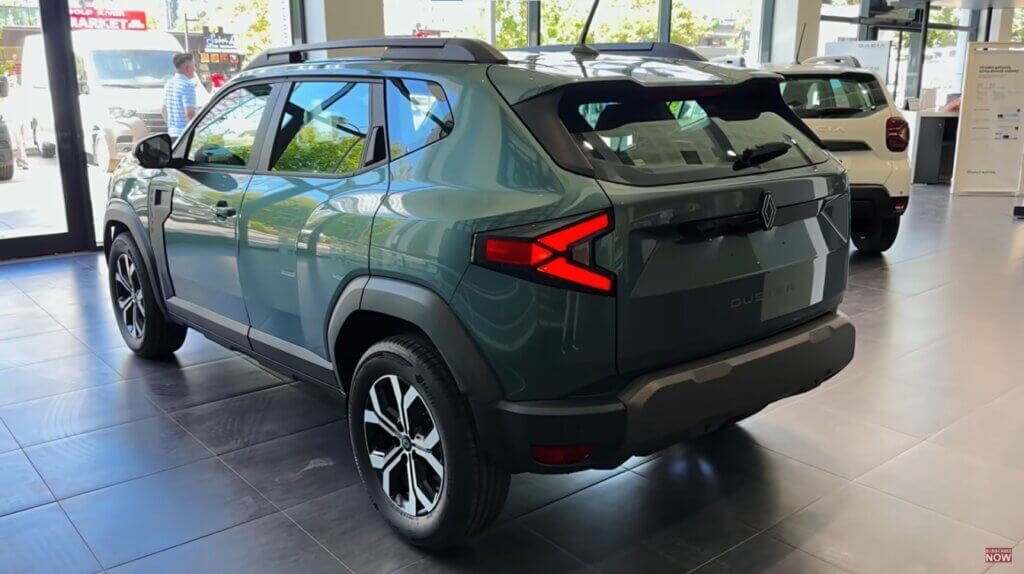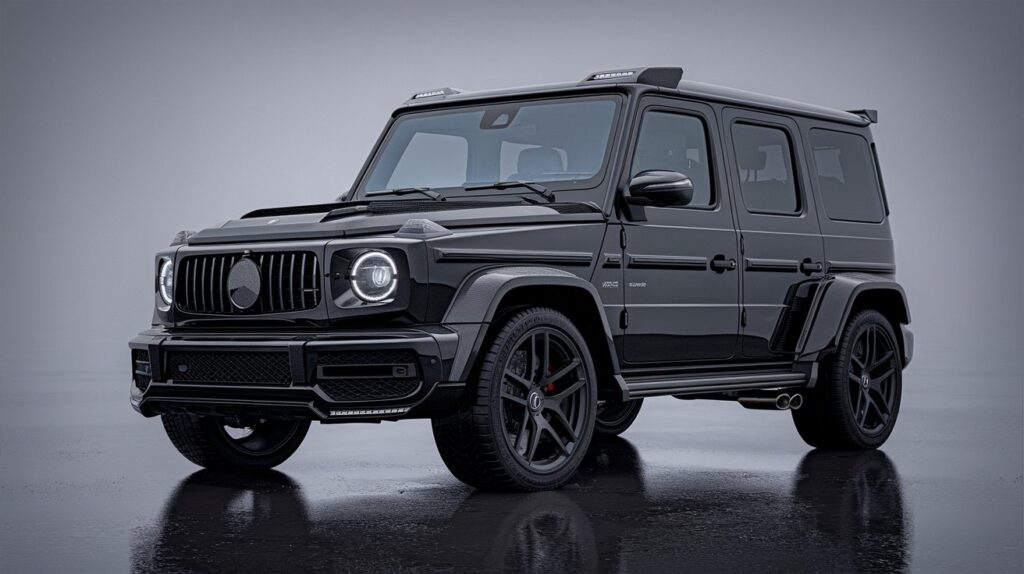Introduction: The Duster’s Triumphant Return
The Renault Duster has always been the underdog that punches above its weight in the compact SUV segment. With the 2025 model year, Renault has reimagined this beloved vehicle with significant upgrades while maintaining its core identity as a practical, affordable, and capable crossover. After spending a week with the new Duster across various terrains, I’m convinced this third-generation model deserves serious consideration from anyone shopping in the competitive compact SUV market.
Renault has preserved the Duster’s signature rugged charm while introducing modern design elements, enhanced powertrain options, and contemporary tech features that make it relevant in today’s increasingly demanding automotive landscape. Whether you’re a city dweller looking for weekend adventure capabilities or a rural driver needing everyday practicality with occasional off-road abilities, the 2025 Duster aims to satisfy both worlds.
Exterior Design: Familiar Yet Fresh
The 2025 Duster maintains its recognizable silhouette but with more refined touches that elevate its presence on the road. Renault’s design team has skillfully walked the line between evolution and revolution, giving the Duster a modern look without alienating its loyal fanbase.
The front fascia now features a wider grille with the updated Renault emblem prominently displayed in the center. LED headlights come standard across all trims, with premium variants getting adaptive functionality. The distinctive C-shaped daytime running lights have become a Renault signature, adding a touch of sophistication to the Duster’s rugged appearance.

In profile, the Duster retains its boxy, utilitarian shape, but with more pronounced wheel arches housing either 16-inch or 18-inch alloy wheels depending on the trim level. The higher ground clearance (now up to 8.3 inches) continues to be a standout feature, especially for those with off-road aspirations.
The rear end gets a complete redesign with horizontally oriented taillights that extend into the tailgate, creating a wider visual stance. The bumper integrates silver skid plates that not only look rugged but offer actual protection during light off-road excursions.
New color options include Atlantic Blue, Urban Grey, and the eye-catching Desert Orange that our test vehicle came in. The two-tone roof option available on higher trims adds a premium touch that helps the Duster stand out in parking lots.
Interior and Comfort: A Major Leap Forward
Step inside the 2025 Duster, and you’ll immediately notice the vast improvement over previous generations. The interior is where Renault has made the most significant strides, addressing what was arguably the Duster’s biggest weakness.
The dashboard layout is now more driver-centric, with a 10.1-inch floating touchscreen infotainment system dominating the center console on mid and high-tier trims (base models get an 8-inch unit). Physical climate controls remain, thankfully avoiding the trend of burying these functions in touchscreen menus.
Seat comfort has been substantially upgraded with better cushioning and more supportive bolstering. The cloth upholstery in lower trims feels durable yet comfortable, while the faux leather in higher trims adds a touch of luxury without sacrificing practicality. The driving position is commanding, with good visibility all around despite the slightly thicker A-pillars.
Rear passengers haven’t been forgotten either, with increased legroom (now up to 36.2 inches) and a more comfortable bench that reclines slightly. Three adults can fit in reasonable comfort for short trips, though two is ideal for longer journeys.
Interior storage is abundant with clever compartments throughout the cabin. The glove box is generously sized, door pockets can hold large water bottles, and the center console includes a deep bin perfect for stashing valuables out of sight.
Perhaps the most impressive aspect is how quiet the cabin has become. Renault engineers have added significantly more sound insulation, making highway cruising surprisingly serene for a vehicle in this price range. Wind and road noise are well suppressed, though the diesel engine’s characteristic clatter does penetrate the cabin under hard acceleration.
Cargo and Practicality: Ready for Adventure
Practicality has always been a Duster strength, and the 2025 model doubles down on this advantage. The cargo area offers 17.7 cubic feet with all seats up, expanding to an impressive 54.3 cubic feet with the rear bench folded. The 60/40 split rear seats don’t fold completely flat, but the slight angle doesn’t seriously compromise cargo-carrying ability.
The load floor height is reasonable, making loading heavy items less of a back-straining exercise. Thoughtful touches include bag hooks, a 12V power outlet in the trunk, and tie-down points for securing loose items. Higher trims add a retractable cargo cover and a washable rubber mat that’s perfect for muddy gear or pets.

One minor complaint involves the tailgate, which lacks power operation even on top trims. However, it’s light enough that most users won’t find this to be an issue.
Technology and Connectivity: Modernized Experience
Technology has received a substantial upgrade in the 2025 Duster. The aforementioned infotainment system runs Renault’s latest software, which is responsive and logically organized. Wireless Apple CarPlay and Android Auto are standard across all but the entry-level trim. The system supports over-the-air updates, ensuring the technology remains current throughout ownership.
The 7-inch digital driver display (available on mid-tier and above) is customizable and provides clear information without overwhelming the driver. Higher trims get a larger 10-inch fully digital cluster with additional display options.
Connectivity options abound with four USB ports (two USB-C in front, two standard USB in rear), Bluetooth for multiple devices, and an available wireless charging pad. The Renault Connect app allows remote monitoring and control of certain vehicle functions like locking/unlocking doors and pre-conditioning the climate control system.
According to research from J.D. Power, modern tech features significantly impact customer satisfaction in compact SUVs, and Renault seems to have taken this research to heart with the new Duster.
Audio quality from the standard six-speaker system is acceptable, while the premium eight-speaker Bose setup available on top trims delivers impressive sound quality for this segment. The Bose system includes a subwoofer that doesn’t intrude on cargo space, a thoughtful integration.
Performance and Powertrain: Something for Everyone
The 2025 Duster offers three powertrain options in the North American market, each with distinct characteristics to suit different needs and preferences.
The base engine is a 1.3-liter turbocharged four-cylinder producing 150 horsepower and 184 lb-ft of torque. This peppy powerplant is matched to either a six-speed manual or a continuously variable transmission (CVT) that simulates seven fixed ratios to reduce the “rubber band” feel often associated with CVTs.
A more powerful 1.5-liter turbocharged four-cylinder generating 170 horsepower and 210 lb-ft of torque is available on mid-level and higher trims. This engine comes exclusively with a smooth-shifting seven-speed dual-clutch automatic transmission that balances performance and efficiency.
For those prioritizing fuel economy, Renault offers a 1.5-liter turbodiesel four-cylinder making 115 horsepower but an impressive 260 lb-ft of torque. The diesel can be paired with either a six-speed manual or the seven-speed dual-clutch automatic.
Front-wheel drive is standard across the range, with a capable all-wheel-drive system optional on higher trims. The AWD setup includes a locking center differential and hill descent control, making the Duster surprisingly competent off-road despite its unibody construction.
During my test week, the 1.5-liter turbo gasoline engine proved to be the sweet spot in the lineup. Zero to 60 mph arrives in around 8.5 seconds – not particularly quick by modern standards, but entirely adequate for everyday driving. More importantly, the mid-range torque provides confident passing power on highways and the ability to climb steep grades without excessive downshifting.
The diesel engine’s massive torque makes it feel quicker around town than its modest horsepower figure would suggest. It’s also the efficiency champion, achieving up to 42 mpg on the highway in front-wheel-drive configuration.
Ride and Handling: Comfort Meets Capability
Renault has struck an impressive balance between on-road comfort and off-road capability with the 2025 Duster’s suspension tuning. The MacPherson strut front and multi-link rear suspension (on AWD models; FWD gets a torsion beam rear) absorbs bumps and road imperfections admirably.
The steering is nicely weighted and provides decent feedback by crossover standards. While nobody will mistake the Duster for a sports car in corners, body roll is well controlled, and the vehicle maintains its composure during emergency maneuvers.

Where the Duster truly impresses is its off-road capability. The 8.3-inch ground clearance, 31-degree approach angle, and 33-degree departure angle allow it to tackle terrain that would strand many competitors. The AWD system’s terrain management modes (Auto, Snow, Sand, Mud/Ruts) optimize traction for different conditions.
During testing on moderately challenging off-road trails, the Duster handled rocks, mud, and steep inclines with surprising ease. It won’t keep pace with dedicated off-roaders like the Jeep Wrangler, but it offers far more capability than most crossovers that rarely leave pavement.
Fuel Economy: Impressive Efficiency
Fuel efficiency is another Duster strong point. The base 1.3-liter turbocharged engine returns EPA-estimated figures of 28 mpg city, 34 mpg highway, and 30 mpg combined with front-wheel drive and the CVT. Opting for the manual transmission improves highway economy to 35 mpg.
The more powerful 1.5-liter turbo achieves 27 mpg city, 33 mpg highway, and 29 mpg combined with front-wheel drive. Adding all-wheel drive reduces these figures by about 2 mpg across the board.
The diesel engine is the efficiency champion, returning 32 mpg city, 42 mpg highway, and 36 mpg combined with front-wheel drive and the manual transmission. Even with all-wheel drive and the automatic, it manages an impressive 30/38/33 mpg.
All engines run on regular unleaded gasoline except the diesel, which requires diesel fuel and also uses AdBlue (DEF) for emissions control. The AdBlue tank needs refilling approximately every 10,000 miles.
Safety Features: Comprehensive Protection
Safety has received proper attention in the 2025 Duster. Standard safety features across all trims include:
- Six airbags (front, side, and curtain)
- Electronic stability control
- Anti-lock braking system with emergency brake assist
- Blind-spot monitoring
- Rear cross-traffic alert
- Lane departure warning
Higher trims add more advanced driver assistance systems like:
- Adaptive cruise control with stop-and-go functionality
- Lane keeping assist
- Traffic sign recognition
- Driver attention monitoring
- 360-degree camera system
- Automatic emergency braking with pedestrian and cyclist detection
The Duster hasn’t yet been rated by IIHS or NHTSA in North America, but the European-spec model received a strong four-star Euro NCAP rating, suggesting good overall protection. According to European safety data, the Duster performs particularly well in adult occupant protection.
Trim Levels and Pricing: Value at Every Level
The 2025 Renault Duster is available in four trim levels: Essential, Comfort, Prestige, and Extreme.
The Essential trim starts at $23,990 and includes the 1.3-liter engine with manual transmission, 16-inch steel wheels, LED headlights, cloth upholstery, an 8-inch infotainment screen, and the basic safety features mentioned earlier.
Stepping up to the Comfort trim ($26,490) adds 16-inch alloy wheels, roof rails, the 7-inch digital driver display, automatic climate control, keyless entry and start, and the option of the 1.5-liter gasoline or diesel engines.
The Prestige trim ($29,990) brings 17-inch diamond-cut alloy wheels, faux leather upholstery, heated front seats, the 10.1-inch infotainment system, wireless charging, and the full suite of advanced driver assistance systems.
The range-topping Extreme trim ($32,990) includes 18-inch alloy wheels, the premium Bose audio system, a panoramic sunroof, leather upholstery, ventilated front seats, and unique exterior styling elements.
All-wheel drive adds $1,800 to the price of any trim where it’s available (Comfort and above). The diesel engine commands a $1,500 premium, while automatic transmissions add $1,200 to the base price.
Even fully loaded, the Duster tops out around $36,000, representing excellent value compared to similarly equipped compact crossovers from other manufacturers that can easily exceed $40,000.
Pros and Cons: The Complete Picture
The 2025 Renault Duster makes a compelling case for itself, but no vehicle is perfect. Here’s an honest assessment of its strengths and weaknesses.
On the positive side, the Duster offers exceptional value at every price point. The base model includes features that would cost thousands more in competitor vehicles, while top trims provide near-luxury amenities at mainstream prices. The diverse powertrain lineup means most buyers can find a configuration that meets their needs, whether prioritizing performance, economy, or capability.
Off-road ability is another major strength. Few crossovers in this price range can match the Duster’s capability when the pavement ends. The comfortable ride doesn’t compromise this ability, making the Duster a true dual-purpose vehicle.
Interior space utilization deserves praise as well. Despite its compact exterior dimensions, the Duster feels spacious inside with good head and legroom for all passengers. Cargo capacity is class-competitive, and the thoughtful storage solutions throughout the cabin enhance everyday usability.
However, some drawbacks remain. The infotainment system, while vastly improved, occasionally exhibits lag when processing multiple inputs rapidly. Some interior materials, particularly in lower trims, still feel a bit cheap compared to class leaders, though they’re likely to prove durable over time.
Road noise, while reduced from previous generations, remains more noticeable than in some competitors, particularly on coarse asphalt. The lack of a hybrid option in an increasingly electrified market may deter some eco-conscious buyers, though the diesel’s efficiency helps mitigate this concern.
Alternatives and Competition: How Does It Stack Up?
The compact crossover segment is fiercely competitive, with established players like the Honda CR-V, Toyota RAV4, and Mazda CX-5 dominating sales charts. The Duster positions itself as a value alternative with off-road credentials that most competitors lack.
Compared to the CR-V, the Duster offers similar passenger space at a lower price point, though the Honda provides more refined road manners and a hybrid option. The RAV4 edges out the Duster in reliability reputation but commands a significant price premium when similarly equipped. The CX-5 offers more engaging on-road dynamics but can’t match the Duster’s off-road capability or fuel economy with the diesel engine.
Perhaps the closest competitors in spirit are the Subaru Forester and Jeep Compass. The Forester offers standard all-wheel drive and comparable off-road ability but at a higher starting price. The Compass Trailhawk provides similar off-road credentials but with less interior space and lower fuel economy.
Frequently Asked Questions
How reliable is the 2025 Renault Duster compared to previous generations?
While it’s too early to make definitive reliability claims about the 2025 model, Renault has made significant strides in quality control for this third-generation Duster. The powertrains are evolutions of proven units rather than all-new designs, which bodes well for long-term dependability. Renault also now offers a 5-year/60,000-mile warranty, demonstrating confidence in the vehicle’s durability. Previous generation Dusters developed good reliability reputations after some initial teething problems were addressed.
Does the Duster have a timing belt or chain, and when does it need replacement?
Both the 1.3-liter and 1.5-liter gasoline engines use timing chains that are designed to last the lifetime of the engine under normal use, eliminating a major maintenance expense. The 1.5-liter diesel engine does use a timing belt that requires replacement at 100,000 miles or 10 years, whichever comes first. This is a relatively infrequent interval compared to many diesel engines.
How does the Duster compare to electric SUVs in terms of environmental impact?
While electric vehicles produce zero tailpipe emissions, the Duster’s efficient engines, particularly the diesel, provide competitive carbon footprints when considering total lifecycle emissions including manufacturing. The diesel Duster’s 42 mpg highway rating means lower carbon emissions than many larger hybrid crossovers. For buyers not yet ready to transition to electric vehicles due to infrastructure concerns or driving patterns, the Duster represents an environmentally responsible choice within the internal combustion engine category.
How much can the 2025 Renault Duster tow?
Properly equipped with the factory towing package, the 2025 Duster can tow up to 3,300 pounds with the 1.5-liter turbo gasoline engine or the diesel engine. The base 1.3-liter engine is rated for 2,500 pounds. These figures are competitive within the compact crossover segment and sufficient for towing small boats, utility trailers, or lightweight campers.
Is the Duster suitable for tall drivers and passengers?
The 2025 Duster offers generous headroom even for drivers and passengers over six feet tall. The front seats provide up to 41.2 inches of headroom and 42.3 inches of legroom, while rear passengers enjoy 39.1 inches of headroom and 36.2 inches of legroom. These dimensions compare favorably to much larger vehicles. The height-adjustable driver’s seat and tilt/telescoping steering wheel help drivers of all statures find a comfortable position.
Conclusion: An Honest Value Proposition
The 2025 Renault Duster isn’t the most luxurious, the fastest, or the most technologically advanced compact SUV on the market. But it might be the most honest. It delivers exactly what it promises: a versatile, capable, and affordable vehicle that doesn’t pretend to be something it’s not.
For buyers who value practicality, efficiency, and genuine off-road ability over badge prestige or the latest gimmicks, the Duster makes a compelling case. The significant improvements to interior quality, technology, and refinement address the main criticisms of previous generations while maintaining the Duster’s core virtues.
In a market segment increasingly defined by look-alike crossovers with inflated price tags and questionable value propositions, the 2025 Renault Duster stands out as a refreshingly straightforward alternative that deserves serious consideration from pragmatic shoppers.

